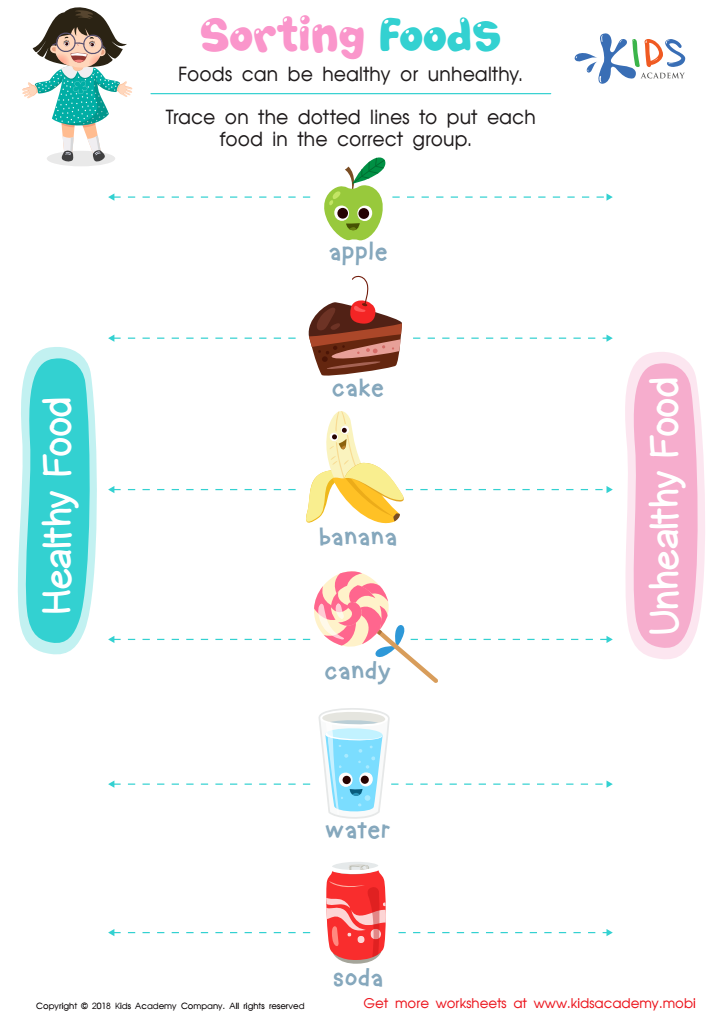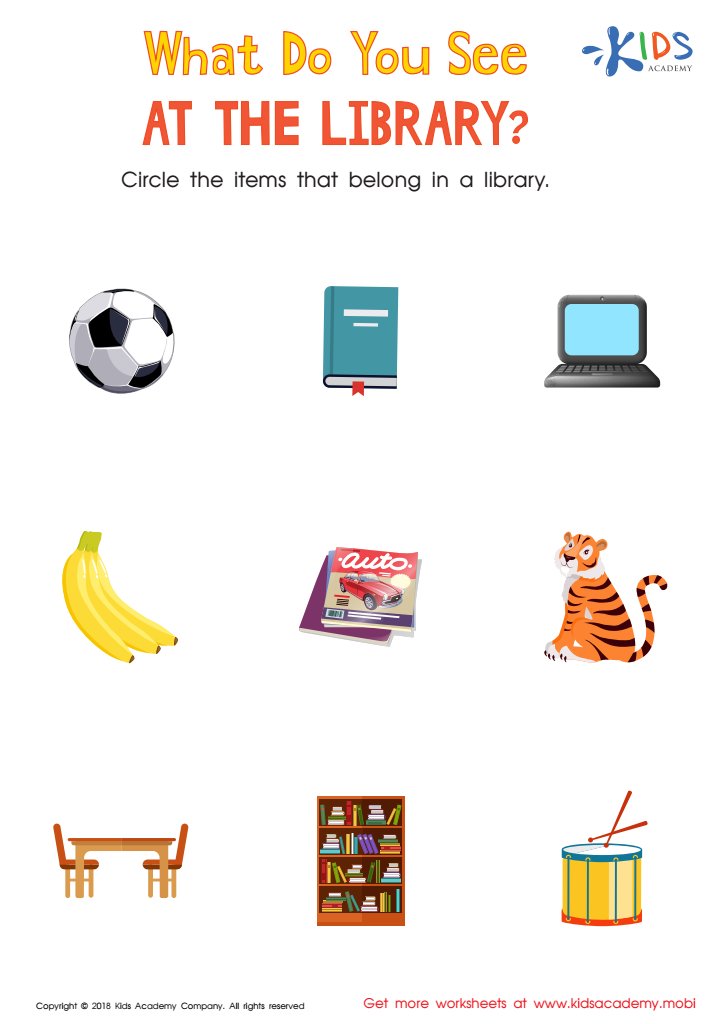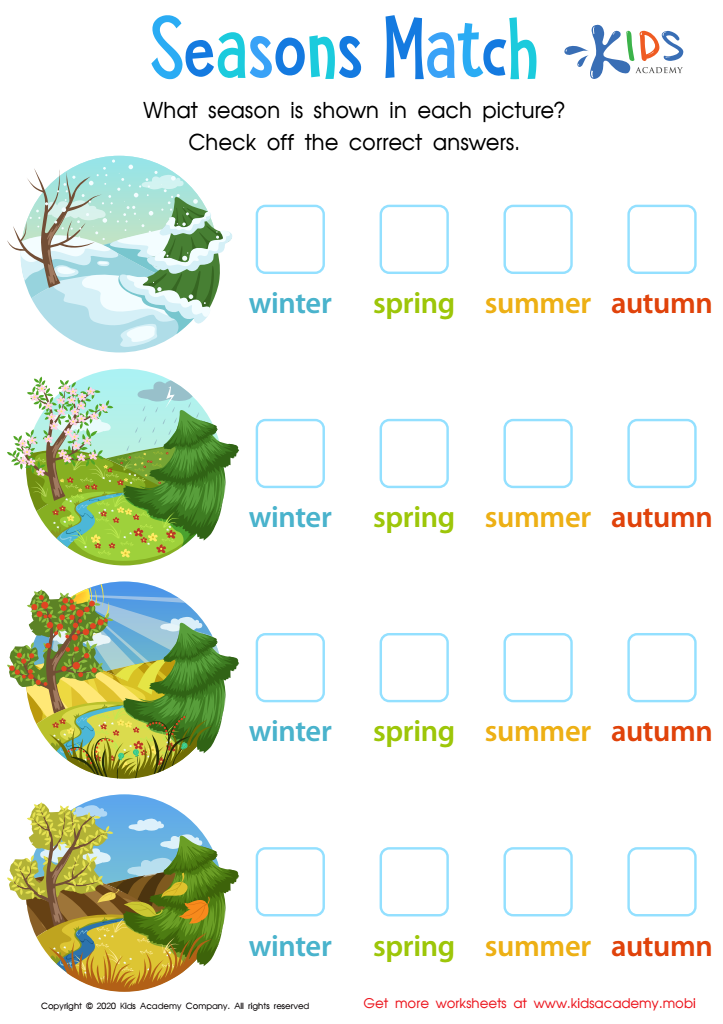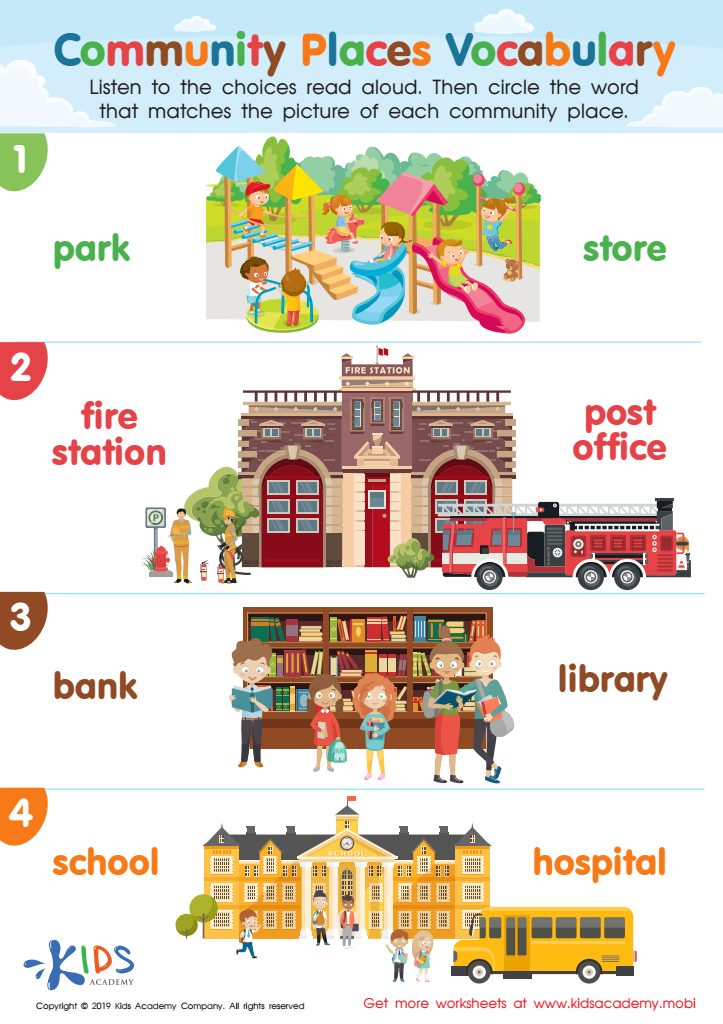Visual recognition Normal Worksheets for Ages 6-9
6 filtered results
-
From - To
Discover engaging and educational Visual Recognition Normal Worksheets designed for ages 6-9 at Kids Academy. These expertly crafted worksheets help children enhance their visual perception and attention to detail through fun and interactive activities. Perfect for early learners, these exercises cover matching, spotting differences, and completing patterns, fostering critical thinking and cognitive development. Tailored to meet educational standards, each worksheet aims to boost confidence and academic growth while keeping young minds engaged. Download today to provide your child with a head start in their learning journey, promoting visual skills critical in their developmental stage.


Sorting Food Worksheet


What Do you See at the Library? Worksheet


Seasons Match Worksheet


Skip Counting by 10 Through Our Community Worksheet


Match the Picture Worksheet


Community Places Vocabulary Worksheet
Visual recognition in children aged 6-9 is a critical developmental milestone necessitating careful attention from both parents and teachers. At this stage, children build their cognitive faculties primarily through visual stimuli, which significantly influences their learning processes and academic performance. Proper visual recognition skills underpin the ability to read, write, and grasp mathematical concepts, all of which heavily rely on accurately interpreting visual information such as letters, numbers, shapes, and patterns.
Moreover, visual recognition impacts a child's social interactions and self-esteem. Children who struggle in this area may find it challenging to follow classroom instructions, engage with peers, or participate in activities that require visual coordination, such as sports and arts. This could lead to frustration, social withdrawal, or behavior issues.
Ensuring that children develop normal visual recognition abilities not only sets a foundation for academic success but also promotes their emotional well-being. Early identification of any issues, through regular observation and standardized screening, enables timely intervention, thereby mitigating potential long-term negative impacts.
Thus, parents and teachers play a crucial role in nurturing visual recognition skills, using targeted activities and ensuring that children receive professional support if needed, paving the way for balanced growth and learning.
 Assign to My Students
Assign to My Students

















